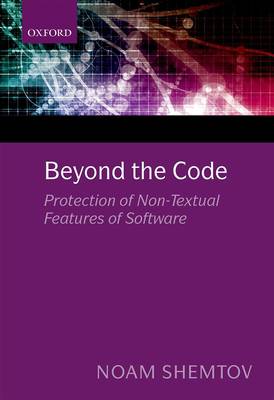
- Retrait gratuit dans votre magasin Club
- 7.000.000 titres dans notre catalogue
- Payer en toute sécurité
- Toujours un magasin près de chez vous
- Retrait gratuit dans votre magasin Club
- 7.000.0000 titres dans notre catalogue
- Payer en toute sécurité
- Toujours un magasin près de chez vous
290,45 €
+ 580 points
Description
Although the law on infringement is relatively straightforward in relation to the copying of literal and textual elements of software, it is the copying of non-literal and functional elements that poses complex and topical questions in the context of intellectual property (IP) protection. In many cases, it is these non-literal and functional elements that contain the real value of a software product. This book concerns the copying of non-literal and functional elements of software in both the United States and European Union, using a holistic approach to address the most topical questions facing experts concerned with legal protection of software products across a range of technological platforms. The book focuses on six distinct but interrelated areas: contract, copyright, patents, trade-dress, designs and trade secrets, discussing these areas separately and in relation to one another. The book discusses software as a multilayered functional product, setting the scene for other legal discussions by highlighting software's unique characteristics. It examines models for the provision of software, addressing licensing patterns and overall enforceability, as well as the statutory and judicial tools for regulating the use of such licences. It assesses the protection of non-literal and functional software elements under EU and US laws, focusing on internal architecture, interfaces, behavioural elements and GUIs.
Spécifications
Parties prenantes
- Auteur(s) :
- Editeur:
Contenu
- Nombre de pages :
- 288
- Langue:
- Anglais
Caractéristiques
- EAN:
- 9780198716792
- Date de parution :
- 24-10-17
- Format:
- Livre relié
- Format numérique:
- Genaaid
- Dimensions :
- 155 mm x 224 mm
- Poids :
- 589 g

Les avis
Nous publions uniquement les avis qui respectent les conditions requises. Consultez nos conditions pour les avis.






